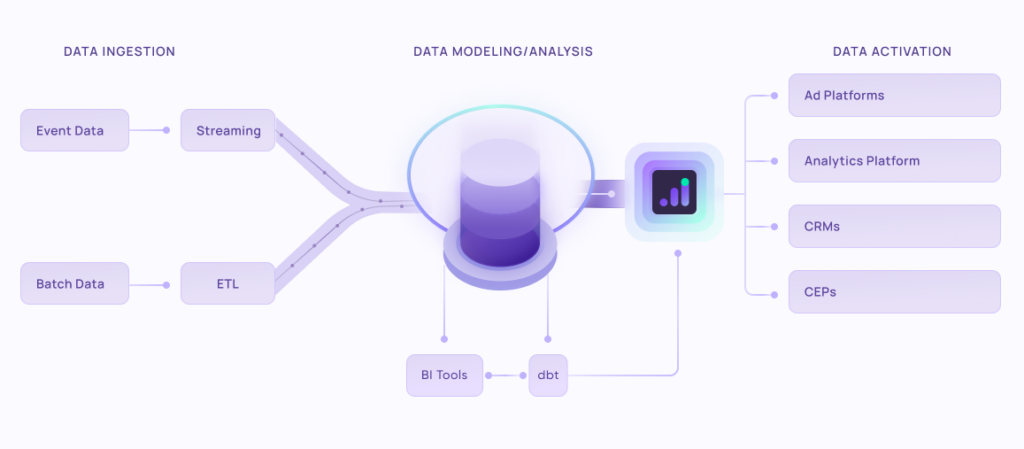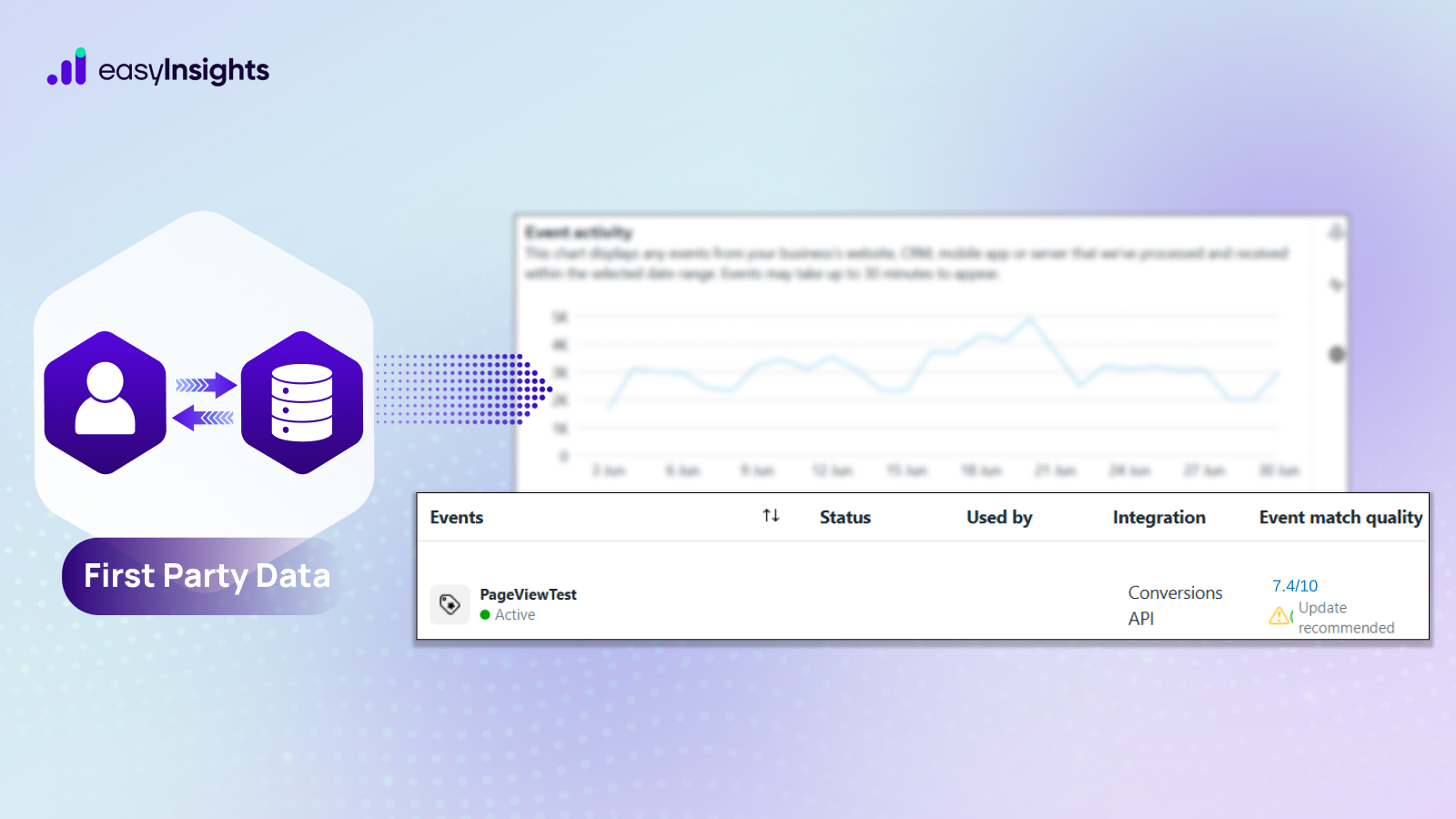
Structured Data is information (data) that is organized (structured). This data has a well-defined structure and conforms to a data model. It is logically arranged, accessible, and simple for a person or computer program to use. A database is one of the best instances of structured data because it often stores structured data in well-defined categories. Typically, it is tabular, with columns and rows outlining its attributes.
It is easy to access and query structured data since it is properly organized and has a clear definition, format, and meaning. Structured data is mainly used to convey specific information about a web page so that it qualifies to appear as a rich result in Google’s search results, but more on that later. Let’s first start with the basics and discuss everything you need to know about structured data.
Jump ahead to:
Here’s what structured data means
Data with a clearly defined structure follows a consistent order, and structured data is simple for a person or computer program to access and use. Any information that has been arranged and stored using a specific set of standardized criteria is said to be structured data. A typical example from a technical perspective would be data assembled into Stored Query Language (SQL) databases. In its broadest meaning, structured data is often established before processing and analysis, and stored in a data warehouse.
Only particular data formats are compatible with structured data. Structured data can be a simple spreadsheet that classifies data points into distinct, less flexible, but useable categories, such as name, title, email, etc. Structured data can also be used to improve databases and make it simpler for search engines like Google to index web pages. Businesses can also analyze structured data to determine whether to change their strategy or develop new products.
Structured data for Search Engines
Structured data is also used for search engines. Search engines have a language, and the only way to clearly explain to Google what your web pages are about is through structured data. Structured data offers you the excellent chance to differentiate the content on your website, enable you to deliver top-notch SEO, and generate business insights to increase the value you provide to your clients.
In a marketing sense, Google and other search engines can use structured data as markup metadata to enhance the content, such as product pages. Structured data in this situation does not show up on the website itself. However, it offers information hidden in the page’s code, enabling Google and other partners to give users more information.
Schema.org reports that less than 1% of online pages use structured data to describe themselves, making the use of structured data potentially very advantageous in the market. Major search engines have accepted Schema.org’s complete set of base structured data components.
Structured vs. Unstructured data
Unstructured data differs from structured data in several ways. We’ll concentrate mainly on the consequences of both structured and unstructured data for search, even if they both have uses other than SEO, such as text messages and contact lists.
Unstructured data, which is raw information not constrained by standard database structures, can be beneficial for your marketing initiatives. Crawlers, such as those used by Google, must therefore analyze the content and make their best, machine-learning-based guesses about its subject matter. However, it provides a lot more flexibility to produce engaging and insightful content beyond a list of data points. Common examples of unstructured data are blog post paragraphs or social media posts.
However, use cases for structured data will become more common, fundamental, and quantitative. For agencies, a large portion of the indicators you use daily are based on structured data, which can be organized into rows and columns in its simplest form. Structured data refers to using schema markup to code content in a simple way for search engines to understand. Structured data is most frequently used for:
- Recipe schema markup
- Event schema markup
- Product schema markup
- Article schema markup
- FAQs
- Breadcrumbs
- Local business schema markup
- Person schema markup
- Organization schema markup
For each of those mentioned above, there are particular guidelines for what data must be formatted and how it should be structured. Unstructured data, on the other hand, might require more effort and expense to use but could provide richer qualitative analysis to guide decisions. Unstructured data, like a blog post, is quicker and simpler to prepare for an agency from an SEO standpoint but more challenging for a search engine to process and comprehend.
The Way Google uses Structured Data
As it is the most popular search engine, Google has a lot of influence over how structured data is used to support SEO. Rich components in Google’s SERPs are mostly enabled via structured data. Sites with structured data in their code might identify specific important metatextual components that Google can crawl and include in SERPs at its choice or the judgment of its algorithms. This type of structured data depends on developers of markup languages or plug-ins integrated into websites.
The Best Way to Add Structured Data to Websites
You can clearly communicate with search engines and arrange the content on your website using structured data. This method makes it simple to organize your data and helps Google interpret important information about your pages.
For example, Person schema makeup is commonly used. Search for any person, say Bill Gates. The key information about a person is listed in the schema person markup on “Wikipedia.” When you Google “Bill Gates,” you get this card with most of the information you want to know about a person.
Here’s how to add it to your website.
- Open the Structured Data Markup Helper from Google. You can create the code for your structured data with the help of this free tool.
- Add the page’s URL after choosing the data type you want to use. Any current formatting will automatically be collected.
- Highlight page elements and assign tags. You can highlight and tag items on this page, including texts, paragraphs, and images.
- Create the HTML. You can add the generated code to your page’s header using the tool.
- Add the HTML to your page by copying it. The HTML can be inserted into your CMS or source code.
- The Schema Markup Validator from Schema.Org can be used to test your structured data. You can test whether the structured data is displayed correctly by entering your URL or the HTML code.
Here are some structured data tools that you can use
Use these tools to add relevant data to your websites. These tools will ensure that any new code you add to your websites is clear and prepared for use by Google and other search engines.
- Google’s Structured Data Markup Helper: This tool helps in adding structured data to webpages.
- Google’s Rich Results Test: With the help of this tool, you can examine which rich results Google can generate using your structured data and get a preview of how they would appear in Google Search.
- Schema.org Markup Validator: Use this tool to validate the markup on your page, including any structured data that has been coded.
- Bing Markup Validator: Use this tool to examine the coding of your website, verify your structured data, and improve your overall search ranking on Bing.
Final words
In SEO, the way that data is organized is crucial. Structured data can assist you in giving search engines the easiest possible time interpreting what you’re saying. Many tools can help you use this “language” efficiently. Schema is the format that we use to organize data in SEO. In this case, your website will be able to appear in results that are visually appealing and draw users to it. Although structured data may seem insignificant, it can significantly impact how well your website performs.
Bonus Read: How EasyInsights can help you work better with Meta Ads and Google Ad Platforms

EasyInsights works with raw data for data activation and data enrichment in a few key ways:
Data Collection and Transformation:
- EasyInsights connect directly to your ad platform allowing it to access and extract the raw data you’ve collected.
- Data Transformation: EasyInsights then cleans, normalizes, and enriches the data to make it usable for activation purposes. This may involve tasks like:
- Formatting data: Ensuring all data points are in a consistent format.
- Handling missing values: Filling in missing data points or removing them according to your preferences.
- Enriching data: Adding additional data points from other sources to create a more comprehensive picture of your customers.
Data Activation:
- Segmentation and Targeting: It allows you to segment your audience based on various criteria like demographics, behavior, and interests using the enriched ad platform data.
- Multi-channel Marketing: You can then use these segments to activate your audience across different marketing channels like email, social media, and advertising platforms.
- Customer Relationship Management (CRM): The data can be used to personalize outreach and interactions with customers within your CRM system.
- Marketing Attribution: EasyInsights can help you understand how different marketing channels contribute to conversions and optimize your marketing spend accordingly.
Key Feature:
- Offers features like customer data platform (CDP) capabilities, marketing automation, and campaign management tools.
- Focuses on reverse ETL (extracting data from your warehouse and sending it to marketing tools) and offers pre-built integrations with various marketing platforms.
EasyInsights is a marketer’s preferred tool for first party data activation.
In this age of cross-channel marketing, EasyInsights offers a comprehensive platform to collect, store, and transform all your first-party data.
EasyInsights enhances marketing campaign efficiency in a cookieless landscape with accurate ad signals. It helps brands step away from surface-level metrics and unleash the potential of first-party data to optimize marketing strategies, ensuring a superior Return on Ad Spend (ROAS). It does all this, while being a highly affordable no-code platform with an exceptional customer support apparatus.
Sign up for a demo today to see EasyInsights in action.








